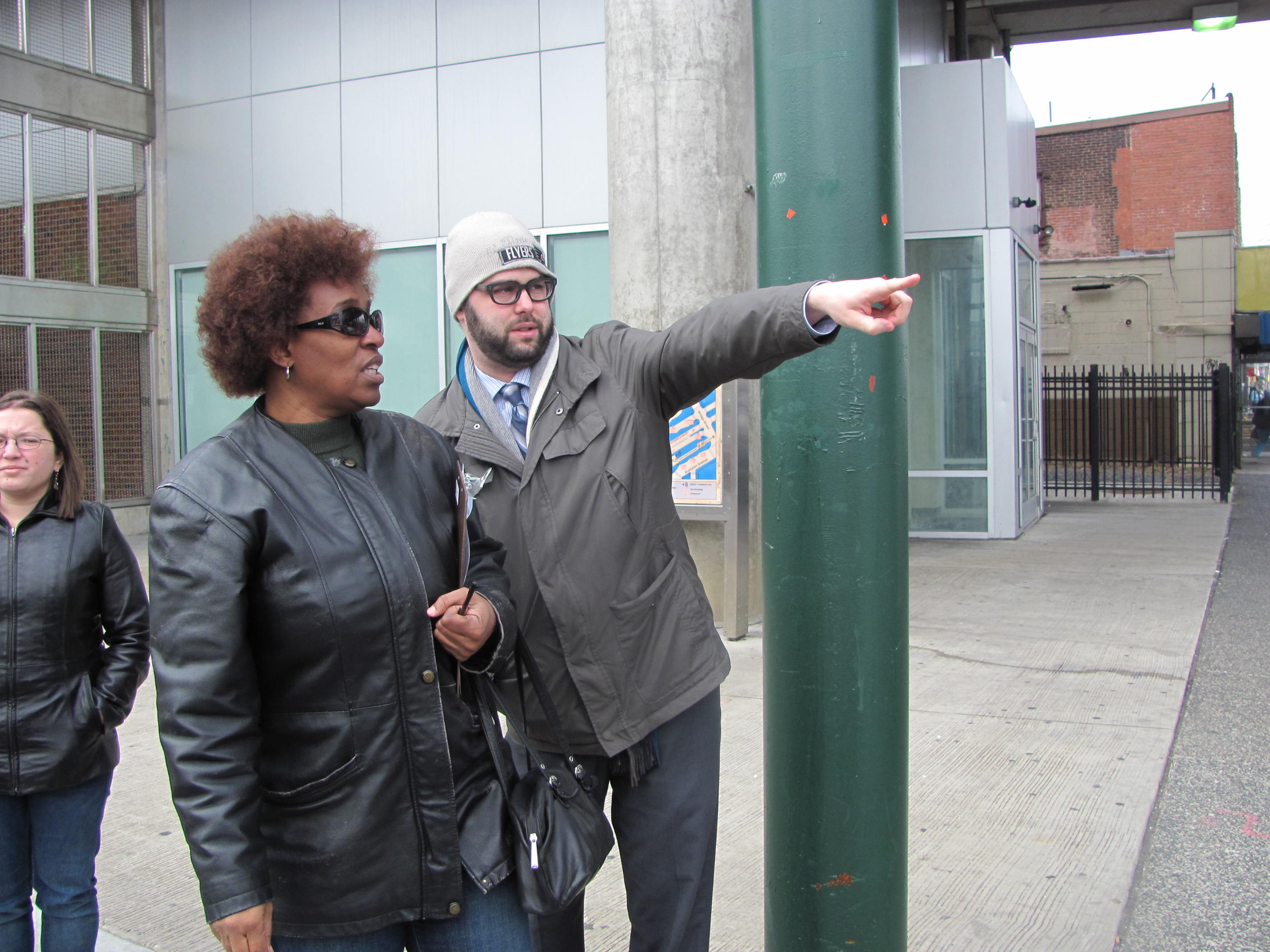Frankford Transportation Center could become community hub with help from Planning Commission

In 1961, Jane Jacobs wrote The Death and Life of Great American Cities, in which she proposed supporting neighborhoods’ use of community-based initiatives.
Fast-forward 50 years, and urban planners are taking her observations into serious consideration, as evidenced by the city’s comprehensive plan, Philadelphia2035, to play up individual neighborhoods’ strengths and improve upon their obstacles to connectivity and access.
Within the next few years, the planning commission will complete 18 district plans, which will incorporate many of the themes and objectives found in the overall citywide plan.
Currently, only three of the 18 plans have been adopted. The most recent being the Lower Northeast District Plan, which includes Frankford, Northwood, Summerdale, Lawncrest and Oxford Circle.
Saturday, Lower Northeast District Plan Project Manager Ian Litwin, other consultants and city employees held a community visioning workshop at Aria Health-Frankford to discuss ways to make Frankford, a major transit hub, more accessible.
Related coverage
First Lower Northeast District planning meeting
Ideas for improvement
Highlights of the neighborhood walking tour included proposed changes to the Frankford Transportation Center, and Thriftway Grocery. The latter was dubbed uninviting because of its high iron gate in front of the entrance.
Three concepts for improvement were presented for comment, though the final design will incorporate elements from all three, including streetscape improvements like trees, lighting and signage.
“I wouldn’t get too hung up on the concepts themselves since we will be testing the individual ideas and coming up with a composite plan in the coming months,” Litwin said.
Residents had their own ideas, too.
“I think there shouldn’t be any more barbershops or hair salons in the area,” Frankford resident Doris Booker said. “We have way too many.” Booker said she likes coming to these meetings because it provides her an opportunity to know about what’s happening in the community.
Bridging a fractured community
But one neighborhood resident, who did not attend the community workshop, had something to say about being informed. Margaret Perkins, 51, said she had no clue the meeting was happening and even if she did she probably wouldn’t have gone. “The problem is people are rarely informed about these events,” she said. “And even if they are, there is no sense of community in the neighborhood.”
That feeling might have something to do with the changes over the last two decades in the Lower Northeast District’s neighborhoods.
The district has a population of 100,232. Between 1990 and 2010, this district experienced an 11 percent growth in population. However, during this same period of time, there was a decline in home ownership and an increase in households living in poverty.
Almost 18 percent of residents don’t have health insurance. And about one in five district residents are enrolled in Medicaid. A startling statistic, the nearest low-cost healthcare facility that can accommodate Medicaid, Medicare and uninsured customers — Health Center 10 at 2230 Cottman Ave. — has a waiting list of more than 100 days.
“It is always a challenge getting the community to come to meetings, especially on a weekend,” Litwin admitted. “However, this was the only time we could get our preferred consultants.” Notices about the meeting were posted on the Planning Commissions blog and Facebook page, and the Frankford Community Development Corporation helped distribute fliers.
As a part of Philadelphia2035’s district plans, two are currently underway and two are to begin during spring 2013.
Tiffany Goforth and Ryan McDonald are students reporting for Philadelphia Neighborhoods, the publication of Temple University’s Multimedia Urban Reporting Lab.
WHYY is your source for fact-based, in-depth journalism and information. As a nonprofit organization, we rely on financial support from readers like you. Please give today.



